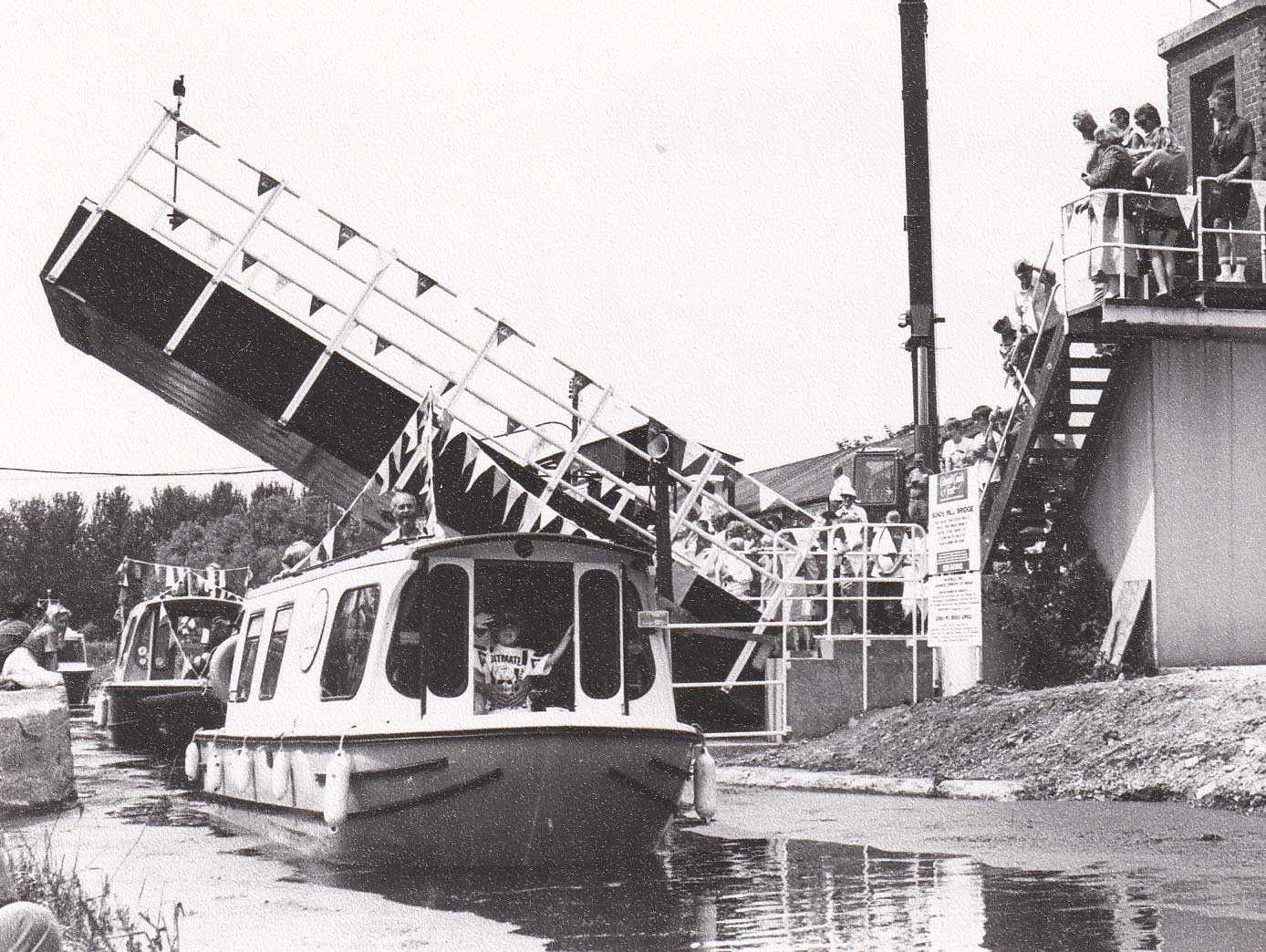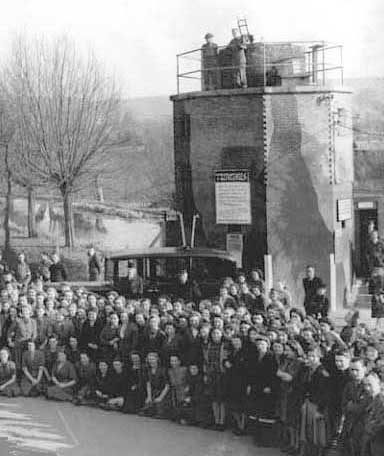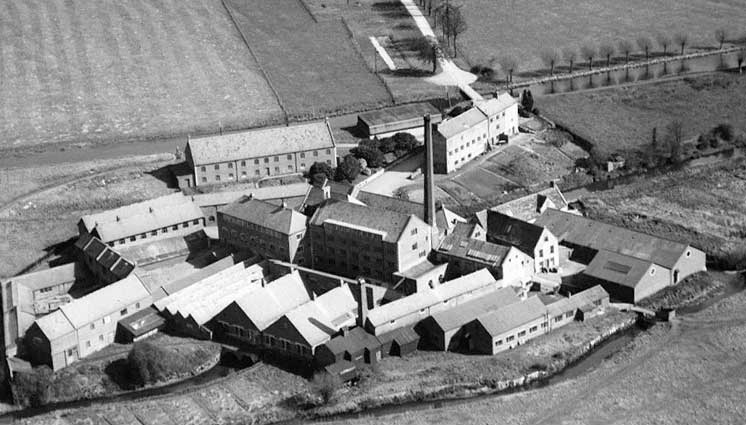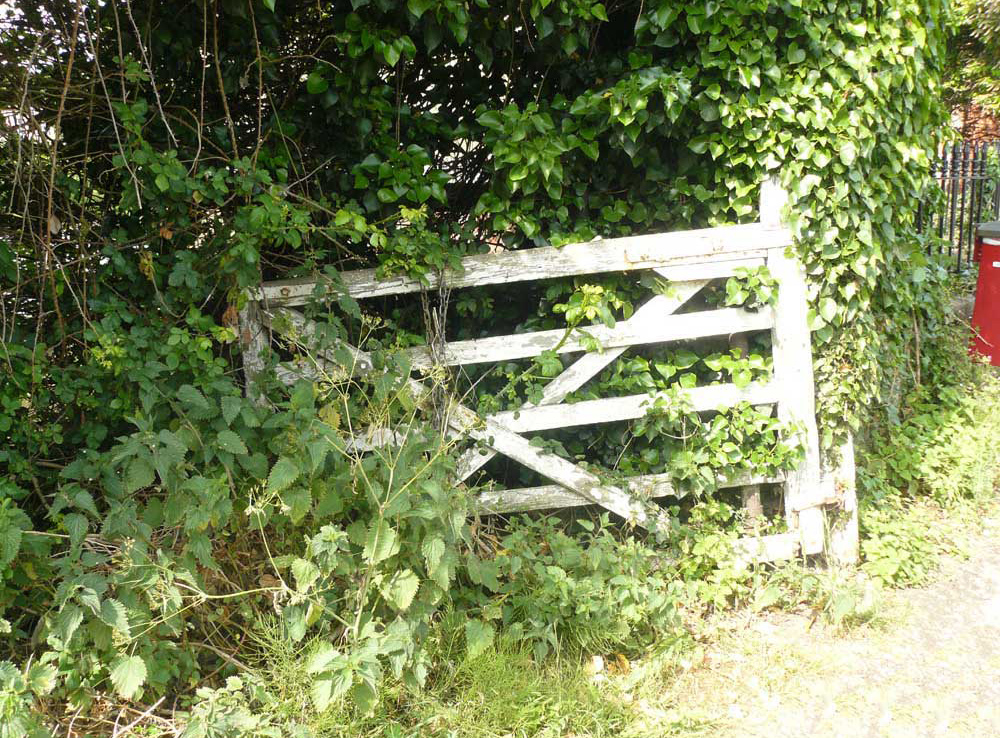

The original swing bridge was the only access to the Bonds Mill estate, which was for many years a major centre for the manufacture of woollen cloth. The curious building beside the bridge was known as a block house when built in 1940, at a time when there was great fear of invasion. It was one of many defensive structures following the line of the canal that were intended to block (or at least delay) an attack on Bristol from the east.
After the war, the swing bridge remained in place until the Cotswold Canals Trust arranged for it to be replaced in 1994. The new light lifting bridge was made from fibre reinforced polymer, and it was hailed as the world's first road bridge using this advanced material. It has not worked well, and it is being replaced.


The block house (also known as a pillbox) has a ground floor built of reinforced concrete with a brick upper storey and a light machine gun post on the roof. The upper floors were evidently provided to help defend the adjoining Sperry Gyroscope Co factory from air attack. The image records a visit to the factory by Queen Mary, the Queen Mother, in 1941.
Such was the importance of maintaining blackout during the War, that the poster seen on the building urged workers to cover any torches with two layers of newspaper. This was evidently taken seriously during shift changes, as several workers ended up in the canal, and barriers had to be put across the towpath to keep the walkers from straying.
The elevated roof also served as an observation post for aircraft spotters who could give reliable information about any approaching threat. Previously, many working hours had been lost because workers were sent to the shelters on the basis of vague remote air-raid warnings.
The building is now a Cotswold Canals Trust visitor centre, open at weekends.


The road over the bridge runs down though a remarkable collection of former industrial buildings once used for making fine woollen cloth. The mill was originally powered by the northern stream of the River Frome which still runs through the site in an embanked channel along the side of the valley. A steam engine was installed in the nineteenth century and coal was delivered by canal. The cloth business declined in the twentieth century and ended in the 1930s.
When war threatened in 1939, the site was taken over by the Sperry Gyroscope Company to make instruments for the armed services. Later, the factory produced equipment used to aid gunners aiming at a moving aircraft. Subsequenly, the site has been redeveloped as a trading estate, with a variety of modern businesses making good use of the old buildings.


Towpath gates were once common along the canal as the towpath was open to the neighbouring fields in many places, and a gate was needed at each field boundary. Just to the east of Bonds Mill Bridge is this last suviving example.
Commonly known as clapgates, each had a chain and a weight so it would close automatically after someone passed through. Even so, boatmen considered them a nuisance, and landowners complained of animals straying because gates had been propped open.
At the start of a side path (to private cottages) 160 yards north-west of Bonds Mill Bridge is a sign advertising eggs for sale from 'Bonds Mill happy hens'!
For building of block houses, visit Stroudwater Pillboxes
For opening of new lift bridge, see Trow Archive Sep 1994.
For factory workers in the canal, see D1180/acc13370/box1/4, letter 17 Feb 1940.
For aircraft spotters on the roof, see GA P316a/PC/50/1 Stonehouse War Book.
For towpath gates propped open, see D1180/6/19, D1180/1/5 p438.